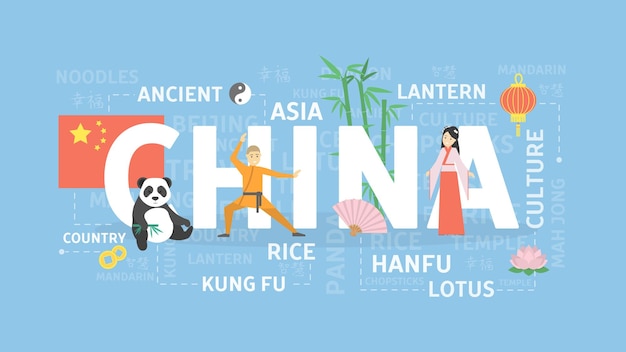Fascinating Facts about China

China is the most populous country in the world, with over 1.4 billion people.
The Great Wall of China is one of the Seven Wonders of the World, spanning over 13,000 miles.
China is known for its rich cultural heritage, including traditions such as calligraphy and tea ceremonies.
Chinese cuisine is diverse and renowned globally, with dishes like dim sum, Peking duck, and sweet and sour chicken.
China is home to the giant panda, a beloved and endangered species.
Chinese New Year, also known as Spring Festival, is the most important traditional holiday in China.
The Terracotta Army, discovered in Xi’an, consists of thousands of life-sized statues of warriors and horses.
China has the largest high-speed rail network in the world, covering over 22,000 miles.
The Forbidden City in Beijing served as the imperial palace for emperors of China for over 500 years.
China is the world’s leading manufacturer of goods, exporting products ranging from electronics to clothing.
The Three Gorges Dam on the Yangtze River is the largest hydropower project in the world.
Traditional Chinese medicine, which includes practices like acupuncture and herbal remedies, has been used for thousands of years.
Confucianism, Taoism, and Buddhism had a significant impact on Chinese philosophy and society.
Shanghai, a bustling metropolis, is known for its futuristic skyline and vibrant nightlife.
China has three of the world’s tallest skyscrapers: Shanghai Tower, Ping An Finance Center, and Guangzhou CTF Finance Centre.
Fascinating Facts about China part 2
The Silk Road, a historic trade route, originated in China and connected it to Central Asia and Europe.
Chinese characters, or hanzi, are one of the oldest writing systems still in use today.
China leads the world in renewable energy production, particularly in solar and wind power.
Tai Chi, a martial art form, originated in China and is now practiced worldwide for its health benefits.
The Beijing National Stadium, also known as the Bird’s Nest, was the main venue for the 2008 Summer Olympics.
Chinese tea culture dates back thousands of years, with different types of tea having unique health properties.
The Yellow River, also known as the Mother River, is the second longest river in China and essential for agriculture.
Chinese opera, with its elaborate costumes and distinctive singing techniques, is an important part of traditional performing arts.
China has four great inventions: papermaking, printing, gunpowder, and the compass.
The Forbidden City has exactly 9,999 rooms, as the number 9 is considered lucky in Chinese culture.
The Chinese zodiac is based on a 12-year cycle, with each year represented by an animal.
Dragon Boat Festival, celebrated in June, involves dragon boat races and eating sticky rice dumplings.
The country’s flag, also known as the Five-star Red Flag, consists of a large golden star and four smaller stars on a red field.
Chinese calligraphy is considered a traditional art form, with different brush strokes conveying various meanings.
China has over 55 UNESCO World Heritage Sites, including the Great Wall, the Summer Palace, and the Mogao Caves.
China’s high-speed trains can reach speeds up to 217 mph (350 km/h).
Hangzhou’s West Lake is a UNESCO World Heritage Site renowned for its scenic beauty and historic pagodas.
China is the world’s largest producer and consumer of tea.
The traditional Chinese game of Mahjong is played with a set of tiles and involves skill, strategy, and luck.
The Beijing Opera, with its vibrant costumes, acrobatics, and music, is considered the pinnacle of Chinese opera.
Chinese lantern festivals, celebrated during the Lunar New Year, feature stunning displays of colorful lanterns.
The Jinsha Site in Chengdu is an archaeological treasure, with artifacts dating back over 3,000 years.
China has the largest number of UNESCO Intangible Cultural Heritage entries, including the art of shadow puppetry and the Dragon Boat Festival.
The Shaolin Temple is considered the birthplace of Chinese Kung Fu and houses many martial arts academies.
The Beijing Underground City is a vast network of tunnels and bomb shelters built during the Cold War era.
China’s economy, now the world’s second largest, has experienced rapid growth over the past few decades.
Chinese traditional dress, known as the qipao or cheongsam, is elegant and designed to highlight the beauty of women.
The Leshan Giant Buddha, carved out of a cliffside, is the largest stone Buddha statue in the world.
China has a long history of silk production, with the Silk Road playing a crucial role in spreading this luxury fabric worldwide.
The Hainan Province in southern China is known as the Hawaii of the East due to its tropical climate and stunning beaches.

